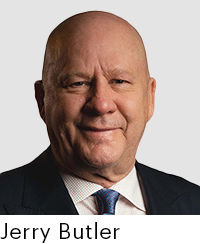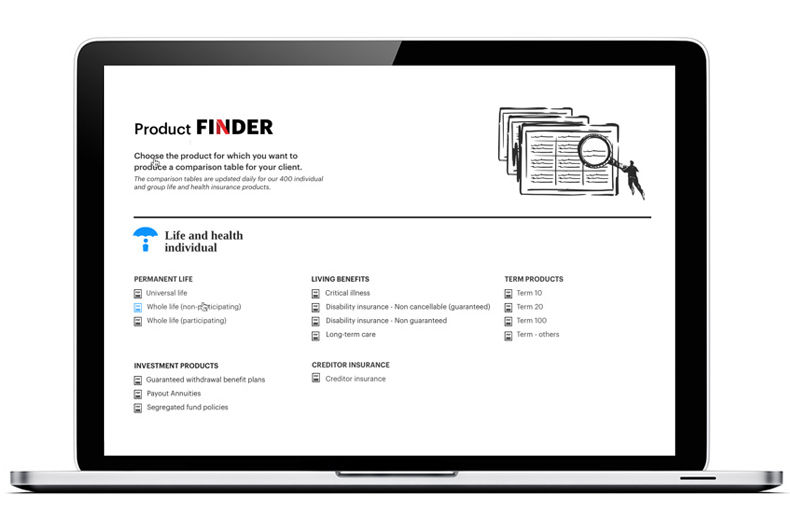This article is a Magazine Supplement for the February issue of the Insurance Journal.

Potential buyers of a block of individual life insurance and financial services business are in no short supply. If you are what Jerry Butler calls a qualified buyer, you may be able to stand out from the masses.
Queenston Consulting, a specialist in financial business valuations, assists in the transition between buyers and sellers of individual life insurance and financial services firms. Its site, which lists potential buyers and sellers, is brimming with offers to buy or merge. Offers to sell are much scarcer. The firm lists of buyers and sellers show a strong presence in Western Canada and Ontario, but less so in Eastern Canada.
Jerry Butler, President of Queenston Consulting, founded the company in 2012. After racking up 25 years in the industry as an investment advisor and financial planner, he was inspired by the first transaction he worked on to leave his full-time advisory practice behind and focus all his attention on his consulting business, he told Insurance Journal. Since then, he has completed nearly 300 transactions, including 25 in 2021.
Many called, few chosen
Butler shared numbers that show the extent of the imbalance between supply and demand for blocks of insurance and individual investment business. When Queenston Consulting posts contact information for a company for sale, it sometimes receives more than 100 responses, he says.
“On average there are 100 buyers for every seller. But are they qualified to buy? Do they have the money? Do they fit what the seller is looking for?” Once these issues are considered, the number of buyers plunges to less than 10. Butler then winnows the list to the top two or three prospects.
What’s more, many buyers contact him out of the blue, unfazed by the absence of a for-sale sign. Jerry Butler says he receives almost a dozen calls or emails every day from people who are interested in buying a business. “It’s still a seller’s market. The seller says ‘here is my business, do you want to buy it.’”
Butler points out that some people buy a block of business to grow. “We look at a lot of different businesses that want to buy and very few of them do their own marketing or have an effective program. I’d say that eight out of ten advisors are not growing their business organically, so they are looking to buy,” he explains.
The fierce competition ramps up the pressure, he adds. “It’s hard to grow your business now because the competition is so extreme: you have a bank, a credit union or your competition on every corner. So, the buyer just pays the ongoing multiple rule of thumb. But there are so many qualitative variables to consider. Buying more clients will make your business bigger but not necessarily better.”
More sellers than meet the eye

Tony Bosch, Hub Financial's Executive Vice President, Broker Development, told Insurance Journal that sellers should not choose a buyer based solely on the best offer. “Many of those who claim they are buyers might not really have what it takes to attract a seller. They don’t have the infrastructure to really support the business they want to acquire. Anyone selling a block of business wants to make sure it will benefit their clients,” he says, adding that if the buyer’s service level is worse than that of the seller, the offer should be rejected.
The buyer must have good systems in place, infrastructure and the experience required, Bosch adds. “When you do the screening, there might be a lot more parity between the number of buyers and sellers,” he points out.
Buyers still abound, but Bosch thinks the image of seller scarcity is deceiving. “The person that considers selling does not want to announce it to the world, because their competitor might start to approach the clients, asking them to join him,” he explains.
Marketing potential
Even in a sellers’ market, not all advisors find a buyer for their block of business. Butler points out that not all advisors have an easy-to-sell business. At Queenston Consulting, one of the most important elements he uses to value a block of business is marketability. “Is the business sellable? There’s a lot of very good businesses but if there’s no buyers, the value is not as great,” he says.
His second most important category is the client list, which he calls relationships capital.
Butler analyzes more than just the quantitative, or financial, aspects of the business for sale. He also does qualitative analysis, where he looks “at management, structure of the business, strategic planning, and whether they can have consistent cash flows?” he explains.
Several qualitative factors affect the marketability of a practice; location is one of them. “Your marketability is less in Whitehorse than it is in Toronto or Montreal,” Butler points out, adding that the size of the population in the area is very important.
Profile trumps multiple
In addition, sellers should look for buyers with similar business models to their own Butler continues. “If you’re specializing in selling insurance to business owners, and you’re making $500,000 a year, you must find a buyer that is going to be able to do a similar amount of business.”
Many other variables need to be factored into the value of a block of business, he adds. “People are talking about rules of thumb like 2, 3, 4 times the recurring revenue, even 7 times, but 7 times what? At banks, IIROC advisors talk about a multiple of gross revenue. MFDAs and independents talk about recurring revenue, trailer and renewals. Everybody talks about a multiple without talking the same language,” Butler says.
Before asking how much a block of business costs, buyers should ask what kind of business is being sold, Butler adds. In his view, another important question is how easily the potential buyer can access funds. He notes that advisors have difficulty obtaining financing from banks for an intangible asset. They can only get such financing if they find someone who specializes in companies whose value is based on their ability to generate revenue, he concludes.







